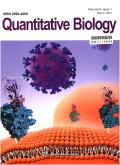通过对比学习和参考指导为单细胞染色质可及性数据提供准确的细胞类型注释
IF 0.6
4区 生物学
Q4 MATHEMATICAL & COMPUTATIONAL BIOLOGY
引用次数: 0
摘要
单细胞染色质可及性测序(scCAS)技术的最新进展为表观基因组异质性的表征提供了新的视角,也增加了对细胞类型自动标注的需求。然而,现有的 scCAS 数据自动注释方法未能纳入参考数据,忽略了只存在于测试集中的新型细胞类型。在此,我们提出了基于对比学习框架的参考指导自动注释方法 RAINBOW,它能有效识别测试集中的新型细胞类型。通过利用对比学习并结合参考数据,RAINBOW 可以有效描述细胞类型的异质性,从而促进更准确的标注。通过在多个 scCAS 数据集上的广泛实验,我们展示了 RAINBOW 在已知和新型细胞类型标注方面相对于最先进方法的优势。我们还验证了在训练过程中加入参考数据的有效性。此外,我们还证明了 RAINBOW 对数据稀疏性和细胞类型数量的鲁棒性。此外,RAINBOW 还能在新测序数据中提供卓越的性能,并能在下游分析中揭示生物学意义。所有结果都证明了 RAINBOW 在 scCAS 数据的细胞类型注释方面的卓越性能。我们预计 RAINBOW 将为 scCAS 数据分析提供必要的指导和巨大的帮助。源代码可从 GitHub 网站获取(BioX-NKU/RAINBOW)。本文章由计算机程序翻译,如有差异,请以英文原文为准。
Accurate cell type annotation for single‐cell chromatin accessibility data via contrastive learning and reference guidance
Recent advances in single‐cell chromatin accessibility sequencing (scCAS) technologies have resulted in new insights into the characterization of epigenomic heterogeneity and have increased the need for automatic cell type annotation. However, existing automatic annotation methods for scCAS data fail to incorporate the reference data and neglect novel cell types, which only exist in a test set. Here, we propose RAINBOW, a reference‐guided automatic annotation method based on the contrastive learning framework, which is capable of effectively identifying novel cell types in a test set. By utilizing contrastive learning and incorporating reference data, RAINBOW can effectively characterize the heterogeneity of cell types, thereby facilitating more accurate annotation. With extensive experiments on multiple scCAS datasets, we show the advantages of RAINBOW over state‐of‐the‐art methods in known and novel cell type annotation. We also verify the effectiveness of incorporating reference data during the training process. In addition, we demonstrate the robustness of RAINBOW to data sparsity and number of cell types. Furthermore, RAINBOW provides superior performance in newly sequenced data and can reveal biological implication in downstream analyses. All the results demonstrate the superior performance of RAINBOW in cell type annotation for scCAS data. We anticipate that RAINBOW will offer essential guidance and great assistance in scCAS data analysis. The source codes are available at the GitHub website (BioX‐NKU/RAINBOW).
求助全文
通过发布文献求助,成功后即可免费获取论文全文。
去求助
来源期刊

Quantitative Biology
MATHEMATICAL & COMPUTATIONAL BIOLOGY-
CiteScore
5.00
自引率
3.20%
发文量
264
期刊介绍:
Quantitative Biology is an interdisciplinary journal that focuses on original research that uses quantitative approaches and technologies to analyze and integrate biological systems, construct and model engineered life systems, and gain a deeper understanding of the life sciences. It aims to provide a platform for not only the analysis but also the integration and construction of biological systems. It is a quarterly journal seeking to provide an inter- and multi-disciplinary forum for a broad blend of peer-reviewed academic papers in order to promote rapid communication and exchange between scientists in the East and the West. The content of Quantitative Biology will mainly focus on the two broad and related areas: ·bioinformatics and computational biology, which focuses on dealing with information technologies and computational methodologies that can efficiently and accurately manipulate –omics data and transform molecular information into biological knowledge. ·systems and synthetic biology, which focuses on complex interactions in biological systems and the emergent functional properties, and on the design and construction of new biological functions and systems. Its goal is to reflect the significant advances made in quantitatively investigating and modeling both natural and engineered life systems at the molecular and higher levels. The journal particularly encourages original papers that link novel theory with cutting-edge experiments, especially in the newly emerging and multi-disciplinary areas of research. The journal also welcomes high-quality reviews and perspective articles.
 求助内容:
求助内容: 应助结果提醒方式:
应助结果提醒方式:


